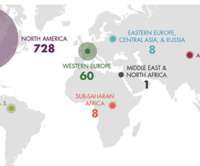Open for comment: Proposed changes to Candid’s taxonomy
Candid
JUNE 5, 2023
Every year, Candid processes data on nearly two million organizations and more than three million grants. That data makes its way into various products and services to help: nonprofits find funding; researchers, advocates, and journalists derive insights into what is happening in the sector; and all types of funders to make funding decisions.


















Let's personalize your content